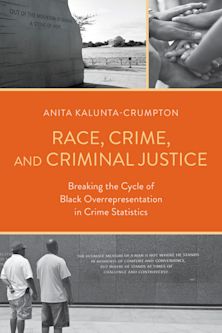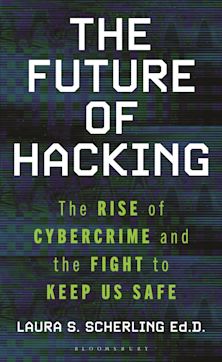- Home
- ACADEMIC
- Criminology
- Criminology - Other
- Community, Crime Control, and Collective Efficacy
Community, Crime Control, and Collective Efficacy
Neighborhoods and Crime in Miami
Community, Crime Control, and Collective Efficacy
Neighborhoods and Crime in Miami
This product is usually dispatched within 1 week
- Delivery and returns info
-
Free CA delivery on orders $40 or over
You must sign in to add this item to your wishlist. Please sign in or create an account
Description
Collective efficacy is a neighborhood-level concept in which community members create a sense of agency and assume ownership for the state of their local community. This concept is one of several forms of formal and informal social control that predict the overall functioning of a community. In this book, the authors examine collective efficacy and crime in eight Miami-Dade County, Florida neighborhoods, based on data they collected from across the country and in the Miami-Dade neighborhoods themselves. They discuss findings relevant to the theory of collective efficacy itself, ramifications for its use within communities, and make recommendations for future research and for translating these results into actionable, crime prevention activities.
Table of Contents
Chapter 2: Methodology
Chapter 3: Psychometric Properties of the New Collective Efficacy Scale
Chapter 4: The Relationships between Perceptions of Collective Efficacy and Social Cohesion and Outcome Variables
Chapter 5: Assessing Heterogeneity in Perceptions of Collective Efficacy and Social Cohesion across Neighborhoods
Chapter 6: Exploring the Predictors of Perceptions of Collective Efficacy and Perceptions of Social Cohesion
Chapter 7: Within Neighborhood Variation in Collective Efficacy and Social Cohesion
Chapter 8: Conclusions and Discussion for Future Research
Chapter 9: Conclusions and Discussion for Future Policy
Product details
| Published | Oct 30 2015 |
|---|---|
| Format | Hardback |
| Edition | 1st |
| Extent | 168 |
| ISBN | 9781498517461 |
| Imprint | Lexington Books |
| Illustrations | 10 BW Illustrations, 20 Tables |
| Dimensions | 238 x 160 mm |
| Publisher | Bloomsbury Publishing |
About the contributors
Reviews
-
The approaches to fostering collective efficacy in local neighborhoods has been key to the work that is being done across various neighborhoods in Los Angeles. The work outlined in this book was instrumental in allowing us to also measure the impact of collective efficacy and to frame critical discussions with our partners in law enforcement and across the community. This work is essential to furthering the approach of community policing across urban communities in the U.S.
Angelica M. Solis, Director of Community Development for Youth Policy Institute
-
This is a critical piece in advancing and setting the research agenda for crime and the social environment of neighborhoods. For too long, criminological research focused on programs and interventions with to little attention paid to the communities impacted by crime. Not content to just build on prior works, this book brings an important level of scrutiny to prior efforts at measuring and explaining social factors relating to crime and provides a road map both for future research and critical review of such efforts. This impressive study and important publication will guide research on how community attributes discourage or promote disorder and crime. Most importantly, it re-focuses research on the most elemental of relationships impacting crime; that between neighborhoods and the people who inhabit them.
Matthew Perkins, Senior Program Officer of the Community Safety Initiative at LISC
-
Uchida and his colleagues should be commended for their work, which helps move ‘collective efficacy’ from theory to practice. They give us solid evidence on how social cohesion works to reduce crime, and solid information that will positively impact police policy and practice.
James R. Coldren Jr., Managing Director of Justice Programs at the CNA Institute for Public Research


































